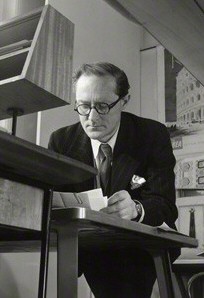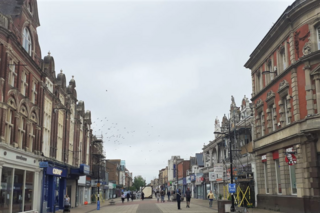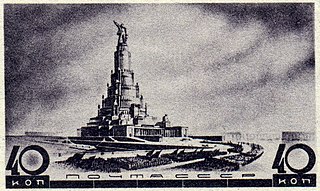Related Research Articles

The Palace of Westminster serves as the meeting place for both the House of Commons and the House of Lords, the two houses of the Parliament of the United Kingdom. Informally known as the Houses of Parliament, the Palace lies on the north bank of the River Thames in the City of Westminster, in central London, England.

Sir Edwin Landseer Lutyens was an English architect known for imaginatively adapting traditional architectural styles to the requirements of his era. He designed many English country houses, war memorials and public buildings. In his biography, the writer Christopher Hussey wrote, "In his lifetime (Lutyens) was widely held to be our greatest architect since Wren if not, as many maintained, his superior". The architectural historian Gavin Stamp described him as "surely the greatest British architect of the twentieth century".

Sir Hugh Maxwell Casson was a British architect. He was also active as an interior designer, as an artist, and as a writer and broadcaster on twentieth-century design. He was the director of architecture for the Festival of Britain on the South Bank in 1951. From 1976 to 1984 he was president of the Royal Academy.

Boscombe is a suburb of Bournemouth, England. Historically in Hampshire, but today in Dorset, it is located to the east of Bournemouth town centre and west of Southbourne.
The year 1964 in architecture involved some significant architectural events and new buildings.
The year 1938 in architecture involved some significant events.
The year 1967 in architecture involved some significant architectural events and new buildings.
The year 1922 in architecture involved some significant architectural events and new buildings.

The San Remo is a cooperative apartment building at 145 and 146 Central Park West, between 74th and 75th Streets, adjacent to Central Park on the Upper West Side of Manhattan in New York City. It was constructed from 1929 to 1930 and was designed by architect Emery Roth in the Renaissance Revival style. The San Remo is 27 stories tall, with twin towers rising from a 17-story base. The building is a contributing property to the Central Park West Historic District, listed on the National Register of Historic Places, and is a New York City designated landmark.

The Palace of the Soviets was a project to construct a political convention center in Moscow on the site of the demolished Cathedral of Christ the Saviour. The main function of the palace was to house sessions of the Supreme Soviet in its 130-metre (430 ft) wide and 100-metre (330 ft) tall grand hall seating over 20,000 people. If built, the 416-metre (1,365 ft) tall palace would have become the world's tallest structure, with an internal volume surpassing the combined volumes of the six tallest American skyscrapers.

Streamline Moderne is an international style of Art Deco architecture and design that emerged in the 1930s. Inspired by aerodynamic design, it emphasized curving forms, long horizontal lines, and sometimes nautical elements. In industrial design, it was used in railroad locomotives, telephones, toasters, buses, appliances, and other devices to give the impression of sleekness and modernity.
Henry Edmund Goodridge was an English architect based in Bath. He worked from the early 1820s until the 1850s, using Classical, Italianate and Gothic styles.

César Pelli was an Argentine-American architect who designed some of the world's tallest buildings and other major urban landmarks. Two of his most notable buildings are the Petronas Towers in Kuala Lumpur and the World Financial Center in New York City. The American Institute of Architects named him one of the ten most influential living American architects in 1991 and awarded him the AIA Gold Medal in 1995. In 2008, the Council on Tall Buildings and Urban Habitat presented him with The Lynn S. Beedle Lifetime Achievement Award.

Sir Evan Owen Williams was an English engineer and architect, known for being the principal engineer for the original Wembley Stadium, and later Gravelly Hill Interchange as well as a number of key modernist buildings, including the Express Building in Manchester and the D10 and D6 Buildings at the Boots Factory Site in Nottingham.

Empire Exhibition, Scotland 1938 was an international exposition held at Bellahouston Park in Glasgow, from May to December 1938.

James Smith was a Scottish architect, who pioneered the Palladian style in Scotland. He was described by Colen Campbell, in his Vitruvius Britannicus (1715–1725), as "the most experienced architect of that kingdom".

The Vorontsov Palace or the Alupka Palace is a historic palace situated at the foot of the Crimean Mountains near the town of Alupka in Crimea. The Vorontsov Palace is one of the oldest and largest palaces in Crimea, and is one of the most popular tourist attractions on Crimea's southern coast.
Dmitry Nikolaevich Chechulin was a Russian Soviet architect, city planner, author, and leading figure of Stalinist architecture.

Sir Terry Farrell is a British architect and urban designer. In 1980, after working for 15 years in partnership with Sir Nicholas Grimshaw, Farrell founded his own firm, Farrells. He garnered a strong reputation for contextual urban design schemes, as well as exuberant works of postmodernism such as the MI6 Building. In 1991, his practice expanded internationally, opening an office in Hong Kong. In Asia his firm designed KK100 in Shenzhen, the tallest building ever designed by a British architect, as well as Guangzhou South railway station, once the largest railway station in Asia.
The year 2013 in architecture involved some significant architectural events and new buildings.
References
- Berkovich, Gary. Reclaiming a History. Jewish Architects in Imperial Russia and the USSR. Volume 2. Soviet Avant-garde: 1917–1933. Weimar und Rostock: Grunberg Verlag. 2021. P. 145. ISBN 978-3-933713-63-6
- ↑ Gray, Christopher (9 September 2010). "For the Car, and Far From Pedestrian". Manhattan (NYC): NYTimes.com. Retrieved 5 February 2012.
- ↑ "San Remo Towers and Retaining Walls - Bournemouth - Dorset - England". British Listed Buildings. 1 June 1938. Retrieved 5 February 2012.